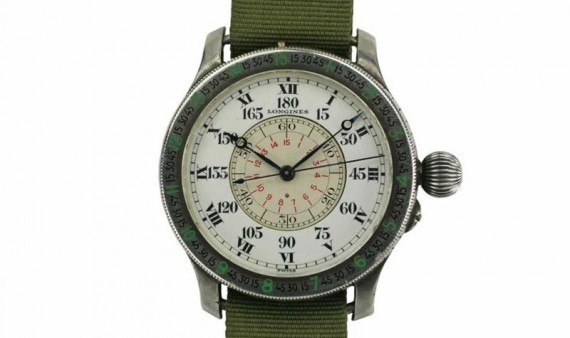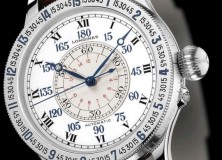Of all the brands we have taken a look at through our “Vintage Eye,” there have been very few with complete collections, let alone entire series, dedicated to reviving the historical watches of the brands’ pasts. Of course, there is the Tudor Heritage Collection and the various homage pieces within the IWC Pilot’s Watch Collection, but there is possibly no watch brand, to my knowledge, that offers as vast an array of historical recreations as the Longines Heritage Collection.

Within this broad designation, Longines has developed everything from trench watch re-interpretations, to vintage-inspired supercompressor divers, to very interesting monopusher chronographs. But this week we will focus our vision on one of the most peculiar references within the series, the Lindbergh Hour Angle Watch — or the Hour Angle, for short.
At first glance, this timepiece is, if nothing else, visually striking. With a 47.5-mm steel case; large, round vintage crown; and very unusual bezel and dial, this watch will, first, fit relatively few wrists comfortably, and second, draw quite a bit of attention. But, there is a reason for the watch’s incredibly distinctive look.
In 1927, legendary aviator Charles Lindbergh became the first man to complete a successful Trans-Atlantic flight from New York to Paris. This feat, flown in Lindbergh’s famous plane, the “Spirit of St. Louis,” was a watershed moment for air travel and exploration; it set the courageous groundwork needed for the intercontinental travel we enjoy so casually today, and solidified Lindbergh’s place in history. Aware of this, Longines approached Lindbergh to design a watch that could help pilots better navigate during long periods of air travel, and using his specifications produced the original Hour Angle watch (above) in 1931.
Now, I would be lying if I said I actually knew how to even approach operating this watch, but that does not make it any less commendable for Longines (and Lindbergh) to have produced it. The modern piece is as close to a complete replica as one can get, and that alone (even though the technology is somewhat confusing) gives the watch an extreme “cool factor.” Truly, the only modern liberties taken in producing this piece were the use of an automatic movement, rather than a hand-wound one, and the choice of a transparent caseback with a pocketwatch-like clasp cover— another reference to the watch’s history as a converted pocketwatch.
Caleb Anderson is the Director of Outreach at the online vintage watch boutique and blog theoandharris.com. Since starting at Theo & Harris, he has garnered extensive knowledge on vintage watches, and spends much of his time sharing his opinions within the field. Currently located near New York City, he is a persistent student in all things historical, a writer on watches, and a casual runne
